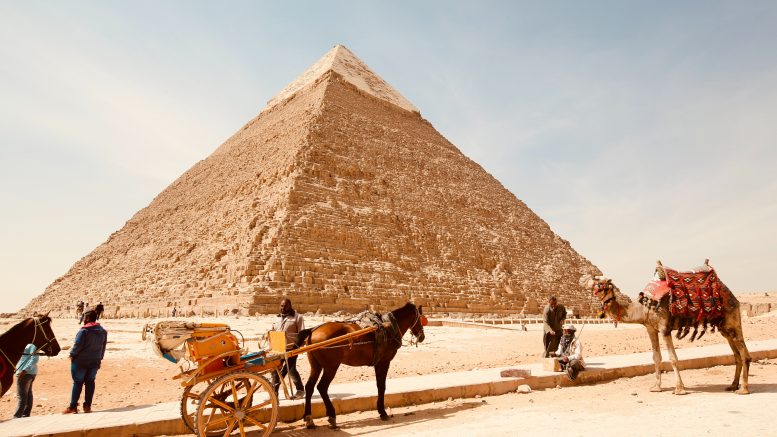Reports have been surfacing that a new tomb belonging to a never-before discovered ancient queen, Neith, has been found in Saqqara, a site in Giza, just 20 miles south of Cairo.
The queen’s identity was previously a mystery, but archaeologists have identified her as “Neith”. The extravagance of her resting place may indicate her importance. While only one coffin was gold plated, all of the coffins have individual faces which are uniquely painted.
The discovery has left many Egyptologists stunned and amazed as the queen has never appeared on records. “It is amazing to literally rewrite what we know of history, adding a new queen to our records.”
Along with the coffins, the newly-discovered queen’s tomb contains a giant limestone sarcophagus, multiple games, figurines, and a metal axe that is thought to be a significant find from the dig.
The New Kingdom tomb was discovered not far away from King Tut’s tomb on the 100th anniversary of his unearthing. The pyramid was uncovered, along with a hidden collection of 300 coffins containing around 100 mummies, artefacts, a network of tunnels, and other antiques.
The lead Egyptologist Zahi Hawass has revealed that the mummies are in excellent condition stating that the discovery “shows that mummification reached its peak in the New Kingdom.”
The New Kingdom, also referred to as the Egyptian empire, is the latter part of ancient Egyptian history spamming from 1,550-1,100 B.C.E. This epoch was the last significant era of Egypt before it split into two kingdoms, ushering in an age of decline.
Recently, another pyramid in the area – belonging to a king of the Sixth Dynasty of Egypt, Teti – has been a focal point for archaeologists. This is due to his influential status as a “God”, and the desire of people to be buried near him – impacting a previously undiscovered style of burial: “New Kingdom burials”.
“Teti was worshipped as a god in the New Kingdom period, and so people wanted to be buried near him… most burials known in Saqqara previously were either from the Old Kingdom or the Late Period. Now we have found 22 shafts, ranging from 30 to 60 feet (9 to 18 meters), all with New Kingdom burials.” said Hawass.
Elements of the discovery from this recently excavated New Kingdom burial site will be on display at the Grand Egyptian Museum in Giza sometime next year.
Words: Laura Parry | Subbing: Nadya Salie


Be the first to comment on "New Egyptian queen? New discovery potentially rewrites history"